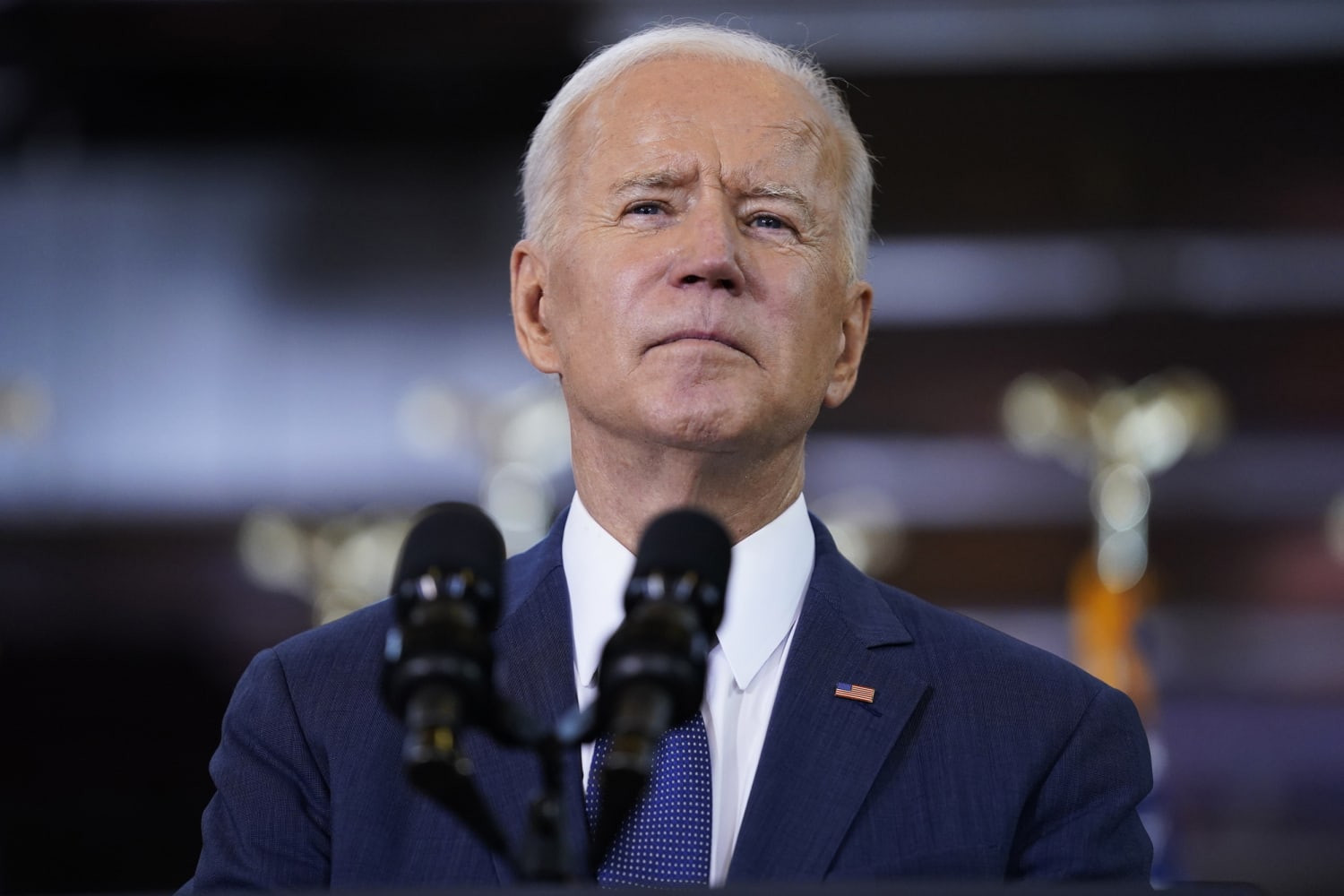WASHINGTON — President Joe Biden threw everything, including the kitchen sink, into his $2 trillion-plus “infrastructure” proposal — and that, more than any individual policy, has become the main point of friction over the plan.
The New York Times accurately reported that a Beltway battle was raging over the name: Biden calls his blueprint the American Jobs Plan; Senate Minority Leader Mitch McConnell, R-Ky., calls it a “Trojan horse.”
The president’s decision to combine a host of issues into a single proposal — from roads, bridges and broadband to housing tax hikes and elder care — is not unusual. It is arguably the most effective way to enact significant legislation in the modern era, and there are plenty of examples of both parties’ having stapled policies together when they have the power and the political capital to do it.
“If you look at the post-war Congresses, the practice of omnibus legislating has been pretty consistent,” said Ronald Weich, dean of the University of Baltimore School of Law, who was chief counsel to Harry Reid, D-Nev., when he was the Senate majority leader.
“The value of it is you only have to pass a bill once to get a lot of stuff done,” he said. But “the larger the bill, the less attention is paid to each aspect of the bill, and that often makes for sloppy legislating.”
As a senator, Biden sponsored an omnibus anti-crime law in 1994 that cracked down on drug offenses while implementing a decadelong ban on so-called assault weapons. Biden has reversed his position on parts of that law — including making certain drug-related crimes punishable by death — and the progressive wing of the Democratic Party has criticized it heavily for creating incentives to convict and imprison more people.
Because Congress has to pass them to keep the government running, annual appropriations bills are the most common omnibus measures. But the nature of reconciliation bills, like Biden’s recently enacted Covid-19 relief and economic stimulus law, usually leads to mix-and-match policies. They are designed to effect changes to the budget by altering federal spending and taxation.
Even in its first session, back in 1789, Congress enacted a catch-all spending measure that covered defense, debts owed by the Continental Congress, reimbursements for government employees and pensions for “invalids.”
More recently, the omnibus appropriations bill that President Donald Trump signed into law shortly before he left office ran to more than 2,000 pages, included more than 30 sections. It altered federal policies on foster families, Montana water rights and carbon monoxide alarms in public housing projects, among other provisions unrelated to the continuing operation of the government.
Trump’s signature 2017 tax reconciliation law included a suite of rate cuts and credits across sectors of the economy and for families. Republicans, then in the majority on Capitol Hill, tacked on unrelated provisions to open the Arctic National Wildlife Refuge to drilling and increase the cap on oil exploration revenues for Gulf Coast states.
Sometimes, provisions that were less heralded when they were enacted become the marquee items in catch-all bills.
In 1986, President Ronald Reagan signed the Combined Omnibus Budget Reconciliation Act, which dealt with topics from tobacco price supports to repealing a requirement that Amtrak enter into charter-train agreements with rail companies. But the measure is best known for a provision that extended health insurance options for displaced workers that is simply called COBRA — the acronym for the law’s name.
Former Rep. Mary Bono, R-Calif., said it’s easy for congressional leaders to rally their caucuses along partisan lines for — or against — massive bills that cover a panoply of issues. There’s enough material for all members of Congress to defend their votes.
“With these large bills, they focus on what’s good for their district or they rant about what’s bad,” she said. “It’s unfortunate, that’s for sure. If the Congress was doing its job, they would do it the right way.”
Loading up a bill with Democratic priorities in addition to more bipartisan policy goals, such as rebuilding roads and bridges, has put Biden in danger of capsizing his own plan. A handful of Democratic senators are reluctant to support a measure that doesn’t attract Republican votes.
That means Biden might have to choose between trying to get 60 Senate votes for a pared-down proposal and trying to stare down members of his own party to use the filibuster-proof reconciliation process to get a bill into law — which would surely knock out some of his plans on parliamentary grounds.
That’s a familiar predicament for presidents dealing with sharply and nearly evenly divided Congresses. Most of them have had little reluctance to bundle their priorities and hope the result is enough to keep their party in line. Sometimes, that requires adding or subtracting provisions to get the calculus right.
Biden could end up with nothing. Or he could get everything and the kitchen sink.
Source: | This article originally belongs to Nbcnews.com












